In this post, we’ll explore four simple mixed media art techniques:
- foam stamp pattern printing
- gelatin plate monoprinting with foam stamps
- layered glazing for transparent color depth
- wet-on-wet water spritzing with acrylic ink
Whether you’re a beginner or seasoned artist, these techniques will help you expand your visual vocabulary. You can watch the video for more:
1. Foam Stamp Printing Pattern Printing with Acrylics
Foam stamps create bold, graphic shapes that can be repeated to form rhythm and structure. They’re perfect for building backgrounds, borders, or focal layers in art journals and collage work. Having multiple sizes of the same image encourages experimentation with scale, symmetry, and irregularity.
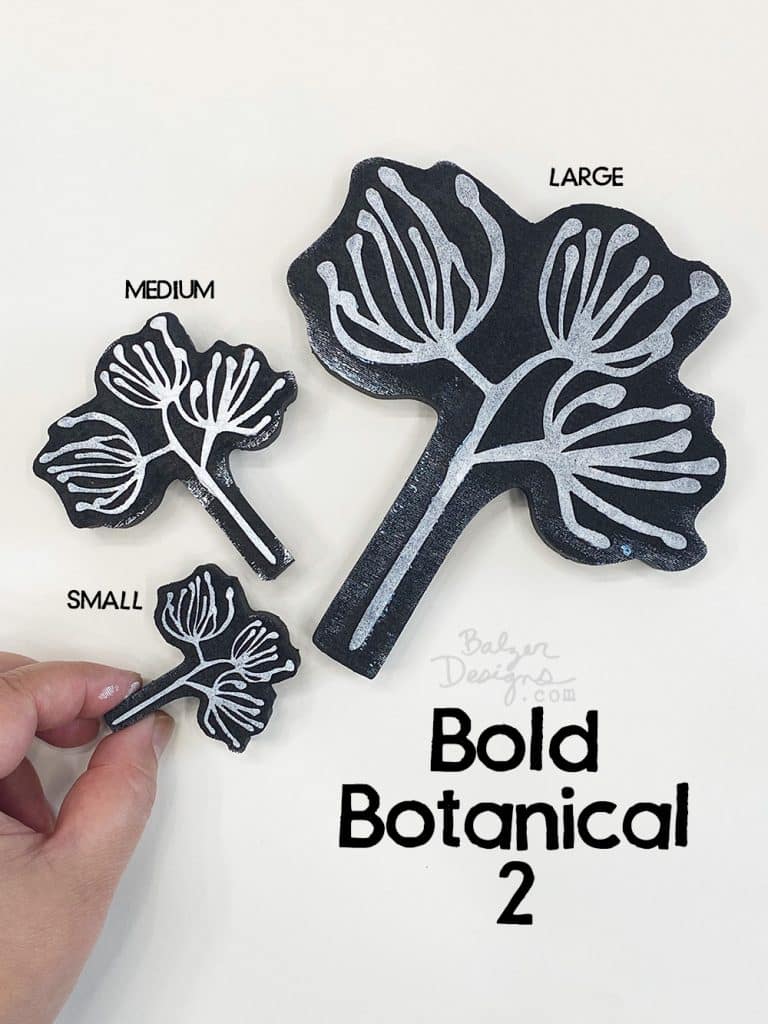
Tools You’ll Need:
- Foam stamps (buy Art Foamies or make your own)
- Acrylic paint
- Brayer
- Gelatin Plate to use as an inking palette
Basic Instructions:
- Roll acrylic paint onto a gelatin plate and use the plate like a giant stamp pad.
- Press your foam stamp onto the plate, then onto paper to create crisp, textured impressions.
- Rotate, flip, and overlap the stamp to build a patterned composition—whether it’s a grid, mandala, or whatever pattern you come up with!
Pro Tip: Pattern printing doesn’t need to be rigid. Imperfect edges, varied pressure, and layering are part of the charm. Try alternating stamp sizes or letting patterns fade off the edge of the page for a more organic look.
2. Gelatin Plate Monoprinting with Foam Stamps
Gelatin plate monoprinting is a cornerstone of many mixed media art techniques. It allows for single-print impressions that are rich in texture and layering. If you’ve never tried gelatin printing, you are missing out!
The Basics:
- Apply acrylic paint to a gelatin plate using a brayer.
- Press the foam stamp into the paint on the plate to remove some of the paint.
- Stamp the paint on the stamp onto scrap paper and continue to remove paint from the plate with the foam stamp.
- Once you’re satisfied, let the paint dry on the plate.
- Apply a very thin layer of fluid paint to the gelatin plate with a brayer.
- Press paper onto the gelatin plate to transfer your design.
- If you let the paper sit for a few minutes you often get a better result!
Here’s a close up of the sample from the video:
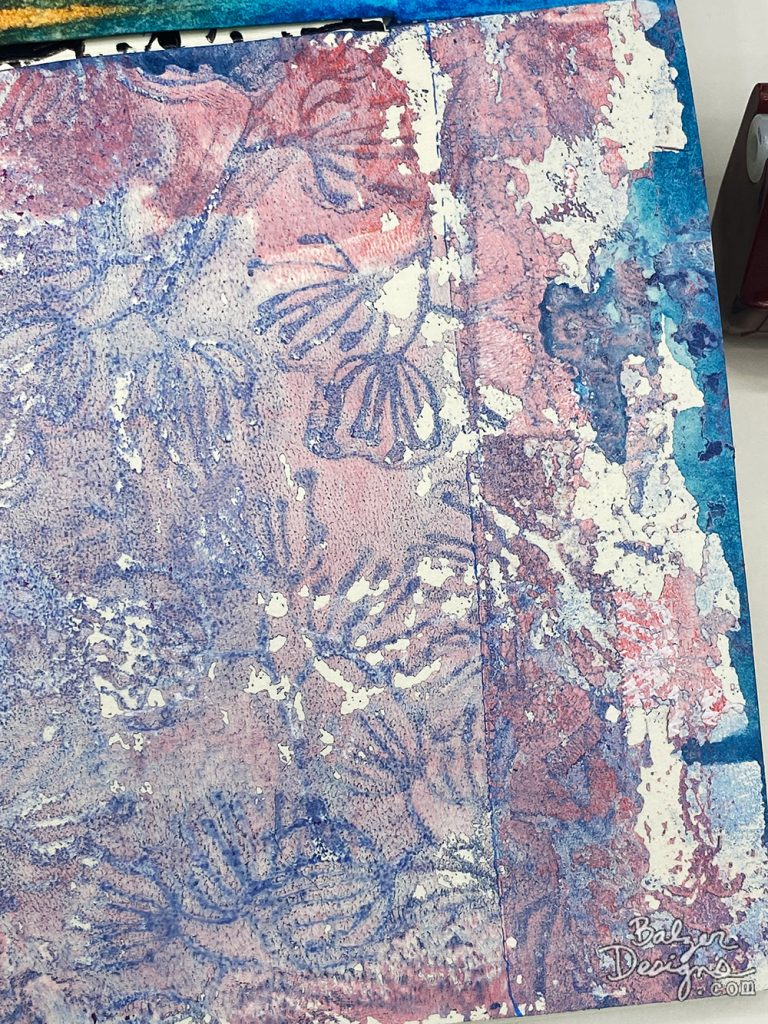
This process is lots of fun and invites playful experimentation. You can build up complex backgrounds or pull stunning stand-alone prints.
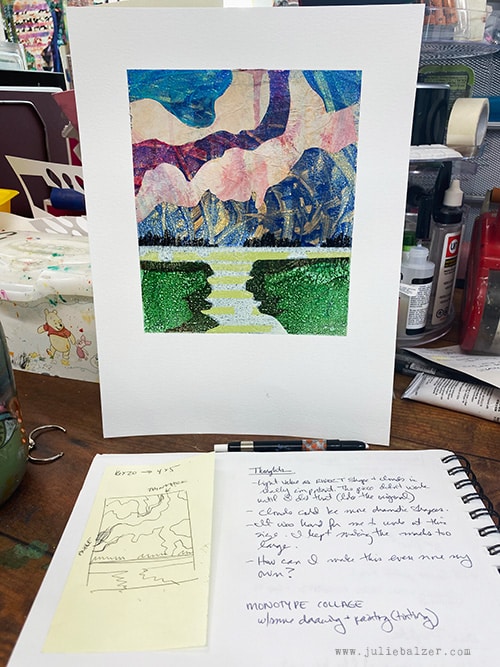
I have an online class that covers everything you ever wanted to know about gelatin printing. And you can find it HERE.
Pro Tip: Layering multiple pulls is a wonderful way to create interest and depth.
3. Layered Glazing for Transparent Color Depth
Want to add a subtle touch of magic to your mixed media pieces? Layered glazing is a wonderful technique to explore. Glazing uses translucent paint layers to build color without losing the marks or textures underneath. Each of these strips of fabric started out looking exactly like the ones to the left of my sketchbook. But you can see how different they each look now that they’ve been glazed!
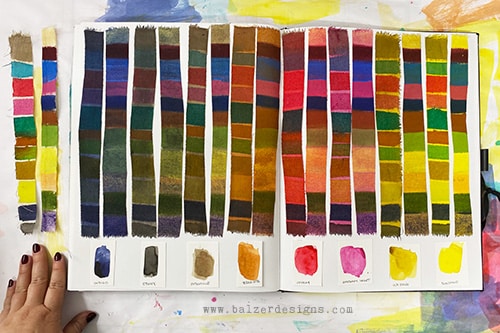
Apply thin, even layers of glaze to unify colors, knock back busy areas, or create atmospheric depth. Because each layer remains slightly transparent, your earlier patterns—like foam stamping or monoprints—shine through beautifully.
Pro Tip: Glazing also works wonders over text or collage elements, helping integrate them into the overall composition.
4. Wet-on-Wet Water Spritzing with Acrylic Ink
One approach to creating a glaze is the wet-on-wet water spritzing technique with acrylic inks. This technique can also be used to create watercolor-esque background. It’s controlled chaos — ideal for abstract effects or layered backgrounds.
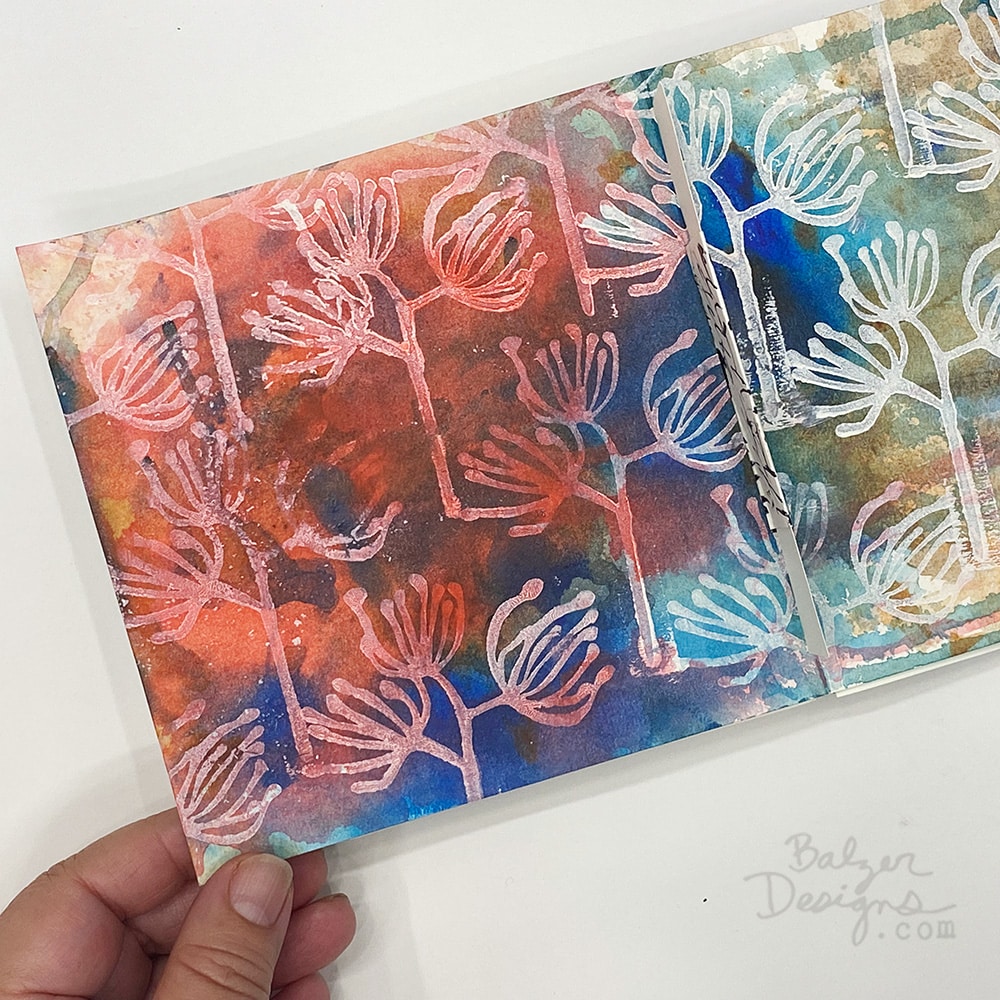
The Basics:
- Wet the surface with clean water.
- Drop or brush on acrylic ink onto the surface.
- Let the colors blend, bleed, and bloom.
- Spray with additional water if needed.
- Tilt the paper or blot strategically to manipulate the flow of paint.
This technique produces soft edges, color transitions, and organic textures.
Pro Tip: If your paper starts to curl, press it gently onto a clean gelatin plate to keep it flat as it dries.
Final Thoughts
These 4 simple mixed media art techniques are all about exploration and embracing the unexpected. They work beautifully on their own or layered together in art journals, collage, abstract work, and more.
Don’t be afraid to experiment. The best part of mixed media art is the freedom to combine materials, solve visual problems on the fly, and discover what delights you along the way!
Thanks for stopping by!

